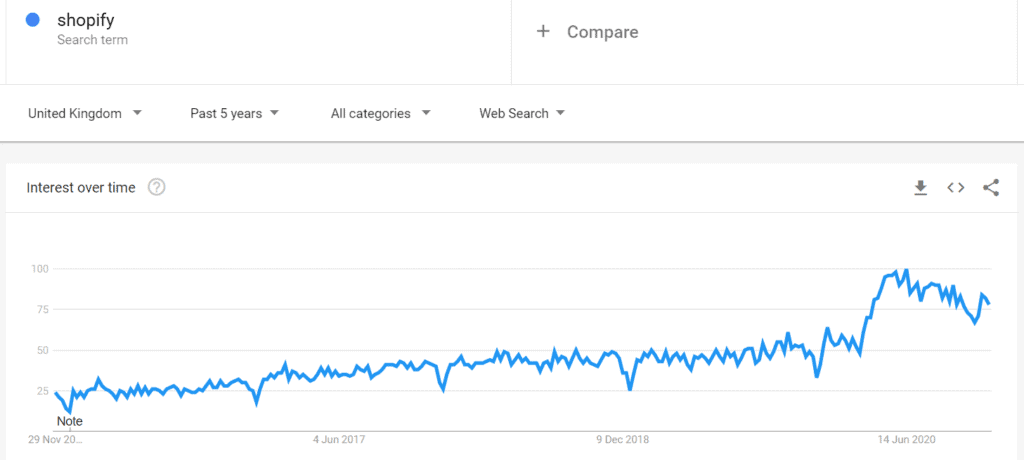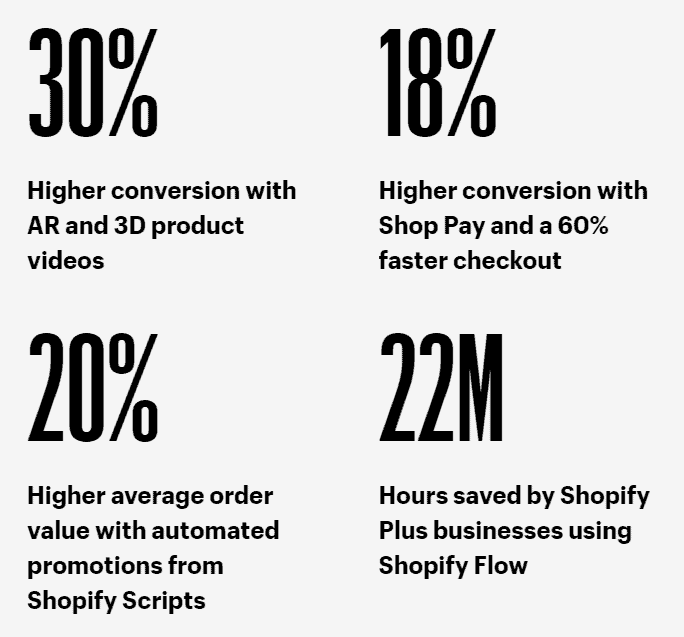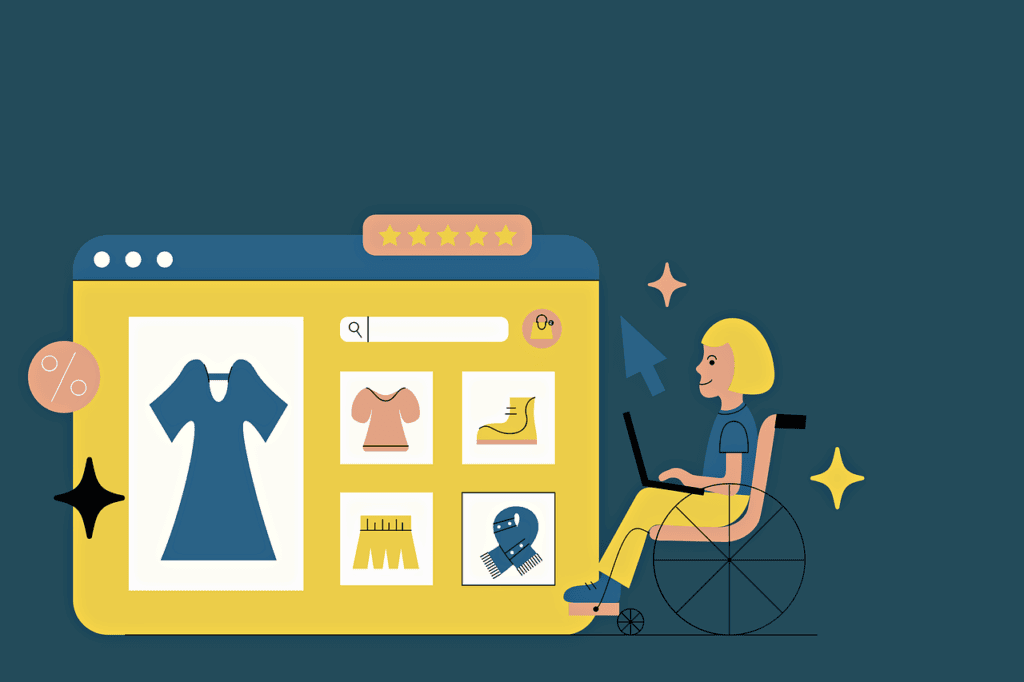If you’re an e-commerce brand you’ll have heard of Shopify. If you’re a growing e-commerce brand you might have Shopify Plus on your radar.
But why would you make the transition to Plus, what are the key differences to standard Shopify and, crucially, when should you switch?
Before we get into the details, let’s take a look at the growth of Shopify. Google Trends – which monitors the number of searches conducted over a given time – shows how interest in the platform has risen over the last five years and, particularly, since covid-19 struck in the UK.

It’s the fastest-growing e-commerce platform in the world and it’s easy to see why. Simple to set up, no coding knowledge required, secure handling of customer payments and certain features as standard such as cart abandonment emails and the ability to sell on multiple platforms such as Amazon, Facebook and Instagram.
Ultimately, it gives merchants peace of mind that the technology has their backs, leaving them with the time to focus on improving their stores and growing their businesses.
What is Shopify Plus?
Shopify Plus sits on the same platform, just on steroids, providing you with increased functionality, further control over the back-end code and enhanced automation options, including creating scripts for promotions and access to workflows to increase efficiency.
While the upgrade comes with more options, the beauty of levelling up is that if you are already comfortable with using Shopify then Plus works in the same way. Switching to Plus won’t change how the platform works; it’s what you get extra which makes it so attractive to brands ready to move to enterprise-level status.
So let’s take a look at why you would make the transition to Shopify Plus.
Reason #1 – Cart customisation
Shopify comes with numerous free themes to choose from plus more than 100 paid-for alternatives.
Those comfortable with working with code can access Shopify’s own language, via the Liquid template files, for deeper control over the appearance of their store.
With a Plus account, store managers can access the code used for customers’ checkout experience, thus providing full control over this vital stage of the conversion journey.
If you’re successful enough to be using Plus then making even small percentage improvements at the checkout stage will have a big impact on revenues.
Reason #2 – Flexibility on discounts

Offers represent an important sales driver and Shopify Plus merchants receive access to the platform’s scripting feature which allows heightened levels of control over discounts.
Create product bundles, multi-buy offers, activate free shipping or gifts, set-up tiered pricing to reward top customers and more, using the properties of customers’ baskets.
Scripts are written using the Shopify API and there’s a neat explainer guide here.
Reason #3 – Enhanced control over store-wide events
If you’re at a size which warrants paying for Shopify Plus then, in all likelihood, you’ve got a store bursting with products. If you’re planning on running special events then you’ll want to get familiar with the Launchpad app.
This nifty Plus-only tool can dramatically reduce the amount of time spent on creating and managing events – for example Black Friday or a new product launch – and provides you with the ability to create these in advance of the go-live date.
Using Launchpad, you can adjust pricing at the start and end of the event, select particular discounted products to be released at a given time, customise your theme to showcase event products and even build anticipation by password-protecting your store for a length of time.
It gives you increased control over your events and removes a significant amount of manual input, thus reducing the chance of errors which can prove costly to sales.
Reason #4 – Automation to enhance efficiency
Shopify Flow saves merchants time on inventory, customer and order management – and that’s a major bonus for big e-commerce brands.
Flow is pretty intuitive and can reduce time and risk – making it highly valuable for enterprise-level stores.
The basic premise is that merchants can create workflows, using tags, based on customer actions or store requirements. Here are three examples where Flow can be used:
- Stock levels of a product hit a certain number – set by you – and an alert is automatically created and sent to a chosen channel and team. For example, an email alert can be sent to the logistics team. If inboxes tend to get clogged up, then this alert can be sent elsewhere such as Slack or Google Sheets.
- A customer leaves a one-star review which triggers a support ticket, removing the need for someone to pick this up manually or, even worse, for it to be left without action
- An unusually high order is placed, one which could result in a number of returns or it could even be fraudulent. You can set criteria such as the billing and shipping addresses don’t match to trigger an alert or add a tag on high orders for the team to review before the transaction completes. You can then flag that customer as high risk for any future instances.
Used and applied correctly, Flow can make big differences for stores with significant activity.
Reason #5 – Dedicated support and recommendations
The 24/7 support is often cited as a major Shopify benefit – and it is impressive – and with a Plus account, this is taken to a whole new level.
Firstly, a consultant will be able to determine whether Plus is right for your business. If deemed that it is then technical engineers will support integration into your existing platforms and also assist with website and data migration.
You’ll then gain access to ongoing growth support by being assigned a dedicated ‘success manager’ who works with you to identify improvements across your entire store – from theme design to product selection to digital marketing traffic-driving techniques.
This merchant success manager job advert will help explain what your store can expect.
Reason #6 – Increased volume of integrations
The use of APIs is likely to be significant for big stores which want to connect Shopify with internal systems such as CRMs and ERPs.
Plus accounts benefit from an increase in volume of API calls, so allowing multiple integrations without exceeding standard limits.
Reason #7 – Unlimited bandwidth
Last, but by no means least if you feel that your site is going to hit epic customer levels, is the fact that Plus customers benefit from unlimited server bandwidth and 200 terabytes of storage.
You’ll never have to worry about having too many customers on-site at one time.
When to make the move up to Shopify Plus
One of the key considerations when considering levelling up is the cost.

While pricing for the standard Shopify is clear – the three options can be seen above – it’s not the same for Plus and you’ll need to make contact with them directly to get a quote. Expect to be asked about your business model and turnover and be ready to haggle to get an agreeable price.
If monthly sales are below the $800,000 mark then you can expect to pay about $2,000 per month.
This is likely to have a significant effect on whether migrating to Shopify Plus is the right decision, but the benefits we’ve listed should also be taken into consideration about what is possible in the future.
Forecast what the potential conversion improvements can do for your business and how much staff time can be saved by reducing some laborious tasks.
Shopify also boasts that Plus customers spend up to 80% less time on technical tasks on their online stores than with legacy systems, allowing you to focus on your brand and customer experience; not your IT department.



